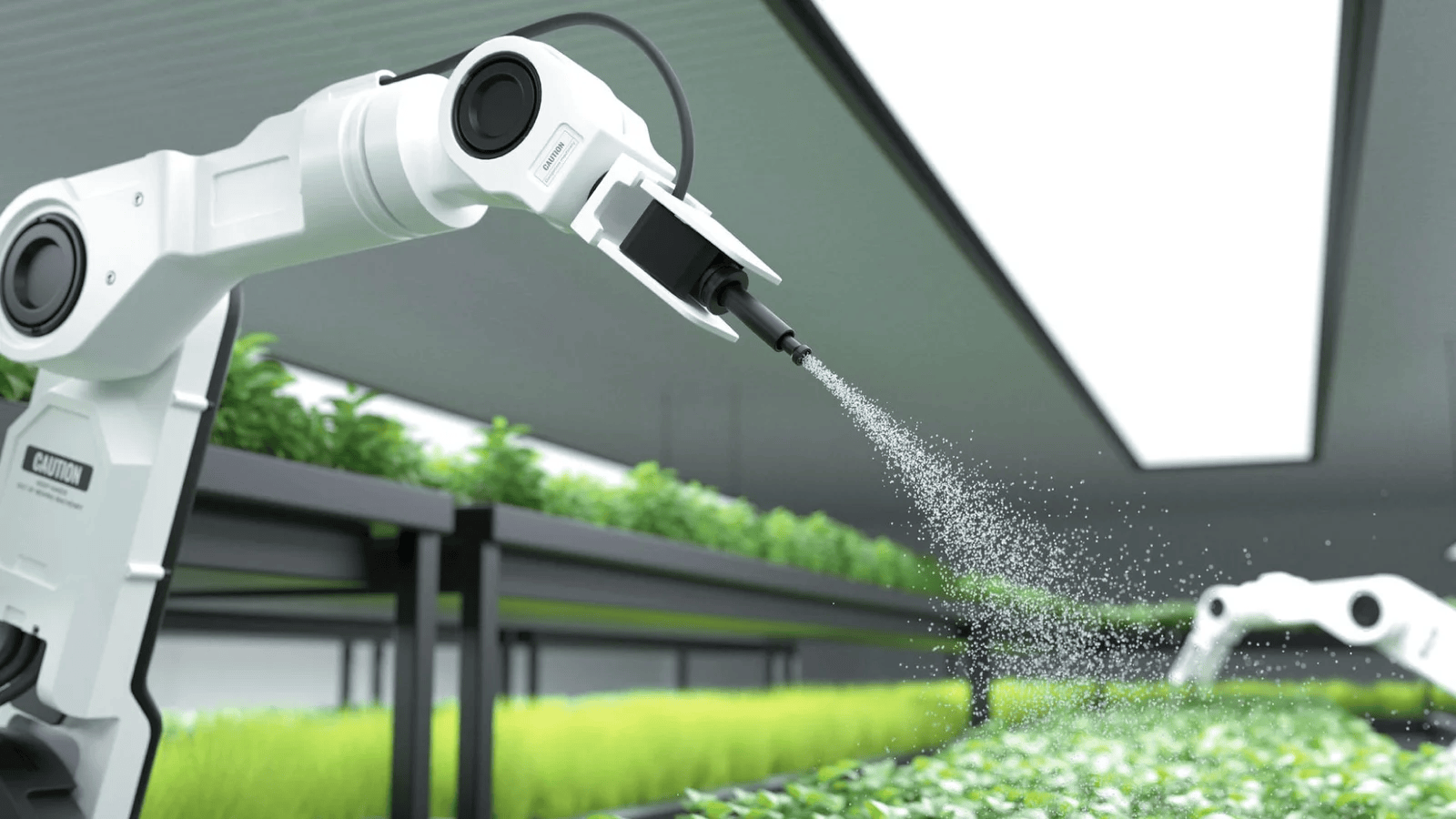AI in Manufacturing Operational Excellence with AI Tools

The manufacturing industry is at an inflection point. Over the last decade, the sector has been moving toward digitalization, streamlined processes, and incremental efficiency improvements. We now have smart factories—systems that alert humans to issues—but the mandate has evolved. Today, Artificial intelligence applications in smart manufacturing plants are enabling the next generation of industrial operations. The smart factory is no longer the strategic endgame; the future is the Autonomous industrial plants powered by AI technology, self-healing and self-optimizing ecosystems requiring minimal human intervention. This paradigm shift emphasizes efficiency, resiliency, and speed, and leaders who understand it will reshape market share by 2025.
Table of Contents:
The Automation End Game is Here
Moving Beyond Predictive AI
The Unspoken ROI of Autonomous Plants
The Edge Compute Imperative for Resilience
Governance and the Cyber-Physical Threat
The Co-Pilot Model: Reskilling for Autonomy
Leadership’s Next Strategic Choice
The Automation End Game is Here
Previous automation aimed to reduce labor expenses, often creating fragile systems vulnerable to unexpected overloads and supply chain failures. The next-generation factory reverses this. It integrates Self-healing manufacturing systems using AI automation, embedding adaptive intelligence into every machine and process. This approach eradicates unplanned downtime through Reinforcement Learning (RL) models that preemptively adapt, compensate, and dynamically reroute production to prevent failure. Variability is accommodated by the autonomous system instead of being reported.
Moving Beyond Predictive AI
Predictive Maintenance (PdM) provided cost savings by allowing humans to react to potential issues. However, relying on human intervention—even informed—remains a bottleneck. The move to autonomy shifts focus to AI-driven predictive maintenance in manufacturing industries and prescriptive, self-healing systems.
These closed-loop controls operate in real-time using physics-informed AI and Digital Twins. They detect anomalies, identify root causes, simulate countermeasures, and apply solutions within milliseconds, maintaining production pace while significantly reducing Mean Time to Repair (MTTR).
The strategic benefits are undeniable. Zero-latency corrections allow machines to instantly compensate for tool wear, thermal fluctuations, or variations in raw materials. Systemic resilience ensures that if one asset fails, workloads are automatically redistributed across compatible clusters, maintaining uninterrupted production. Quality autonomy elevates inspection to 100%, enabling immediate corrections and eliminating batch defects entirely.
The Unspoken ROI of Autonomous Plants
The ROI of autonomous manufacturing extends beyond labor reduction. The real financial gains come from Capital Utilization and Resilience Value (CRV). AI in Manufacturing extends the usable life of high-value assets, enabling continuous operations within optimal parameters and supporting dark factory concepts without added supervision costs. Autonomy mitigates financial exposure to supply chain and geopolitical risks.
By 2025, executives must recognize that production stoppage risk outweighs asset costs. Companies mastering operational resilience capture nearly 10% higher market capitalization than peers. Autonomous operations transform CapEx into a sustainable competitive advantage.
The Edge Computing Imperative for Resilience
Achieving sub-millisecond closed-loop autonomy demands computational power at the Edge. Relying on centralized cloud systems introduces latency and potential vulnerabilities. By combining 5G, private wireless networks, and specialized Edge AI processors, manufacturers can build the foundation for fully autonomous industrial plants.
Edge computing enhances operations through local decision-making, minimized data transmission, scalable AI deployment, and Digital Twin integration, enabling prescriptive actions across Autonomous industrial plants powered by AI technology.
Governance and the Cyber-Physical Threat
Autonomy expands the attack surface. IT and OT convergence requires a unified cybersecurity strategy. Generative AI threats necessitate internal governance measures such as Explainable AI (XAI) and Zero Trust for OT, ensuring self-healing systems remain auditable and secure.
The Co-Pilot Model: Reskilling for Autonomy
Autonomy elevates the workforce. Operators transition from technicians to process engineers, becoming co-pilots in Self-healing manufacturing systems using AI automation. Training emphasizes statistical process control, AI model management, and complex system orchestration. Digital fluency and retention strategies attract next-generation talent critical for maintaining AI-driven predictive maintenance in manufacturing industries.
Leadership’s Next Strategic Choice
Autonomous factories are no longer a vision but a 2025 competitive standard. C-suite leaders must embed autonomy into operational and financial strategy or risk structural obsolescence. The piloting era is over; the era of Artificial intelligence applications in smart manufacturing plants has arrived.
Explore AI TechPark for the latest advancements in AI, IoT, Cybersecurity, AI Tech News, and insightful updates from industry experts.
- Art
- Causes
- Crafts
- Dance
- Drinks
- Film
- Fitness
- Food
- Jocuri
- Gardening
- Health
- Home
- Literature
- Music
- Networking
- Alte
- Party
- Religion
- Shopping
- Sports
- Theater
- Wellness



